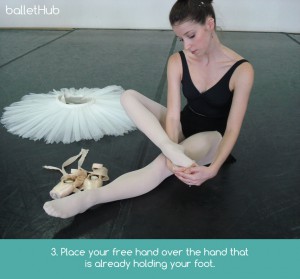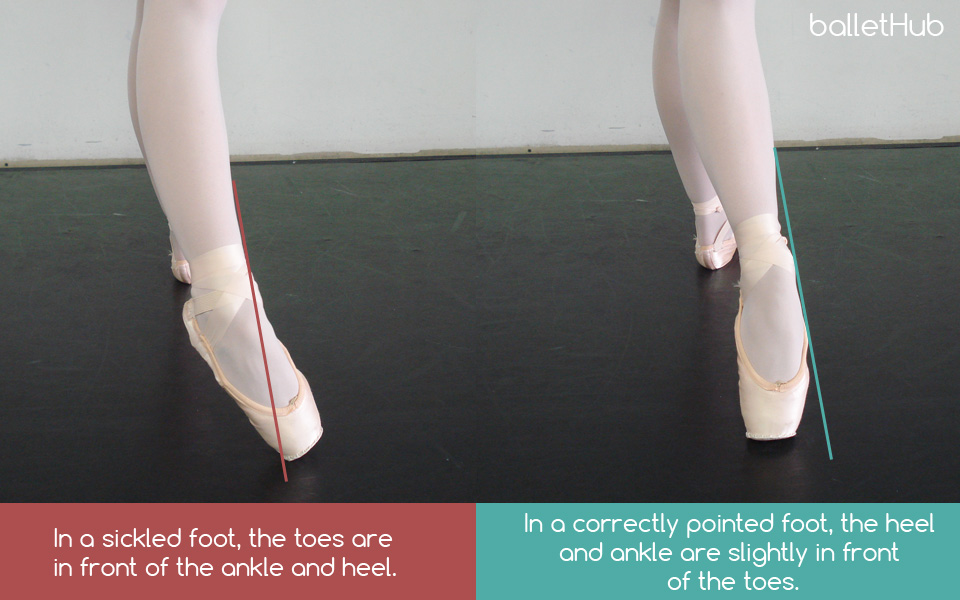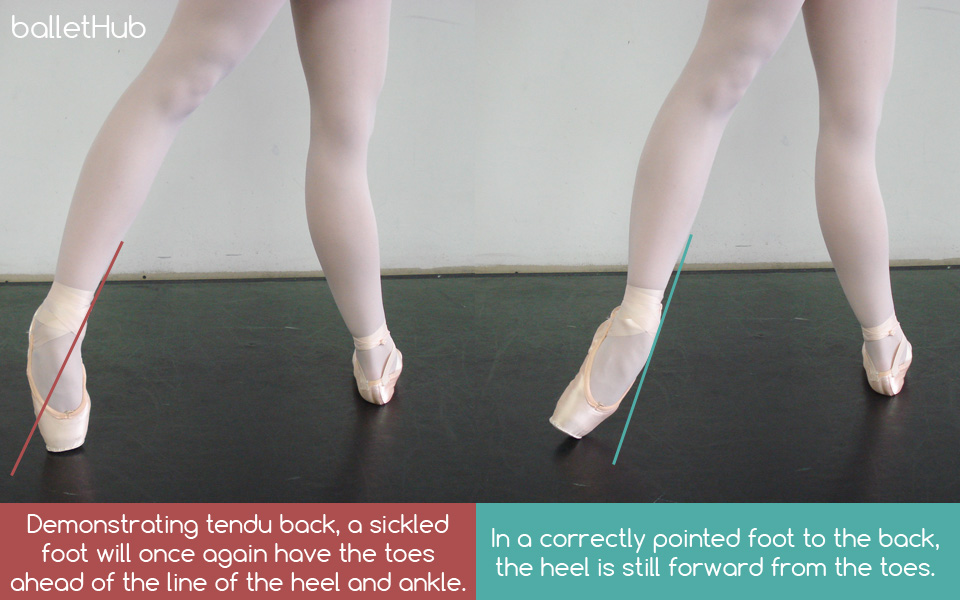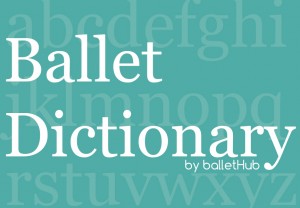How to Stretch Your Feet Safely and Easily For More Flexibility
Comments Off on How to Stretch Your Feet Safely and Easily For More FlexibilityStretching and strengthening your feet have many benefits to your overall technique and presentation as a ballet dancer. Dancers have found all sorts of ways to stretch feet over the years using all sorts of techniques like cramming their feet under a piano or couch, using tools built specifically to stretch feet, or even asking a friend to do it. And while some are effective, some other techniques can actually be quite risky and may result in injury.
A dancer strives for two things, among many others: strength and flexibility. One without the other and there is an imbalance.
Today we’ll show you a couple ways to stretch your feet that are both safe and easy.
These foot stretches are simple stretches that don’t require you to buy anything, ask anyone or use any tools or gadgets to stretch your feet.
Foot Stretch Technique #1: Grab and Pull Back
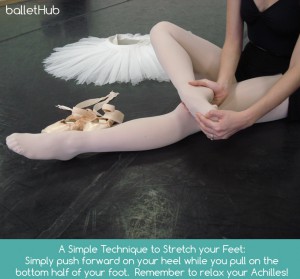 The basic idea, as you may have guessed, is that you grab your foot and pull back. Let’s take a look:
The basic idea, as you may have guessed, is that you grab your foot and pull back. Let’s take a look:
- Sitting on the floor, place the foot you want to stretch over your other thigh to create a figure 4 with your legs.
- With the hand closest to your heel, push into your heel. Be sure to relax your Achilles! (the large band coming down from your calf that attaches to your heel)
- With the hand closest to your toes, place it over your toes and up your foot a couple inches and pull back so that your foot arches, feeling a nice stretch on the top.
And that’s it! It’s simple but effective. Need a little more stretch? Read on for technique number 2!
Foot Stretch Technique #2: Wrap n’ Push
It’s not really called “Wrap n’ Push,” as that name was made up just seconds ago. More important than thinking of a creative label, is how effective this foot stretch really is! If you find that stretching your feet with your hands hasn’t quite worked well, this one is for you. Let’s take a look
- Once again, sitting on the floor, place the foot you want to stretch over your other thigh to create a figure 4 with your legs.
- Lift your foot up slightly and wrap your arm (that is on the same side of the leg you bent) under your bent leg, grabbing the top of your foot toward your toes with your hand.
- With your free hand, place it on top of your hand that is grabbing on the top and bottom half of your foot.
- Lean slightly forward so that your elbow is tucked more closely under your calf and the top of your arm is pushing right into your calf muscle.
- Now that you’re setup, be sure not to feel any tension in your knee and remember to relax your foot and Achilles.
- Begin stretching your foot by pulling back with both of your hands and at the same time equally pushing your leg forward.

Wrap your arm underneath your leg and foot, placing your hand on top, over the bottom half, of your foot.
By pulling equally on your foot with your hands and pushing out with your arm, your leg shouldn’t actually move, but you should feel quite a bit more extra strength to better stretch your foot.
You can play around with this one to best suit it to your body, but the push and pull action that allows for the additional strength is the general idea.
Remember, you should never feel that you are straining or “working too hard” to stretch your feet. You don’t want to overstretch your feet. Ease into it slowly and take a break from time to time to let the whole foot relax. You will end up getting more out of your stretches this way.
 Here is one final look at this effective stretch, but from the angle you’d see if trying it for yourself.
Here is one final look at this effective stretch, but from the angle you’d see if trying it for yourself.
Why Are These Foot Stretches More Safe and While Some Others Aren’t?
The biggest reason why these foot stretches are more safe is because you are in complete control of the stretch and you are doing it with your hand, meaning you are not adding additional stress on your body. For example, other stretches may often involve the dancer prying their feet underneath a heavy object and stretching their knee until they feel a stretch. By doing so, the dancer is placing an incredible amount of tension and strain on the knee joint, muscles in the leg, and digging their heel painfully into the ground for more leverage.
You don’t want to overstretch your feet.
Another popular (for unknown reasons) method for stretching feet is asking a friend to stretch your feet. For this to happen, the asker first must assume that the stretcher is actually okay with touching his or her feet. Then the asker usually sits on the floor with a leg stretched out in front while the stretcher pushes down with a lot of force. This is basically the same idea of prying your foot underneath a heavy object, but now you are at risk of your friend pushing down with enough force that by the time you yell out “Ouch!” its too late and you’ve overstretched your foot. This technique, though popular in schools, is not recommended for many reasons, besides safety, you are now relying on someone else to do the work for you, which is like asking someone to do all of your homework while you get the credit.
Still, Always Be Careful
Stretching your feet is always recommended, so long as you aren’t facing an injury of course. But that being said, you always want to be careful. Don’t stretch your feet so much that you’re actually causing them to be weak, which leads us to our final tip. Also, be sure that you are not stretching your feet in a sickled position.
Always Wrap Up With a Few Strengthening Exercises
Now that you’ve stretched your feet so well, you want them to be able to get there on their own without help from your hands. There is little chance that will happen without adding some exercises to strengthen your feet in the range of their new found flexibility. After you’ve done some foot stretching, be sure to grab an elastic therapy band for some strengthening exercises or do some tendus.
A dancer strives for two things, among many others: strength and flexibility. One without the other and there is an imbalance. Weak but very flexible feet can be just as much of a hurdle as strong but flexible feet when it comes to ballet technique.

